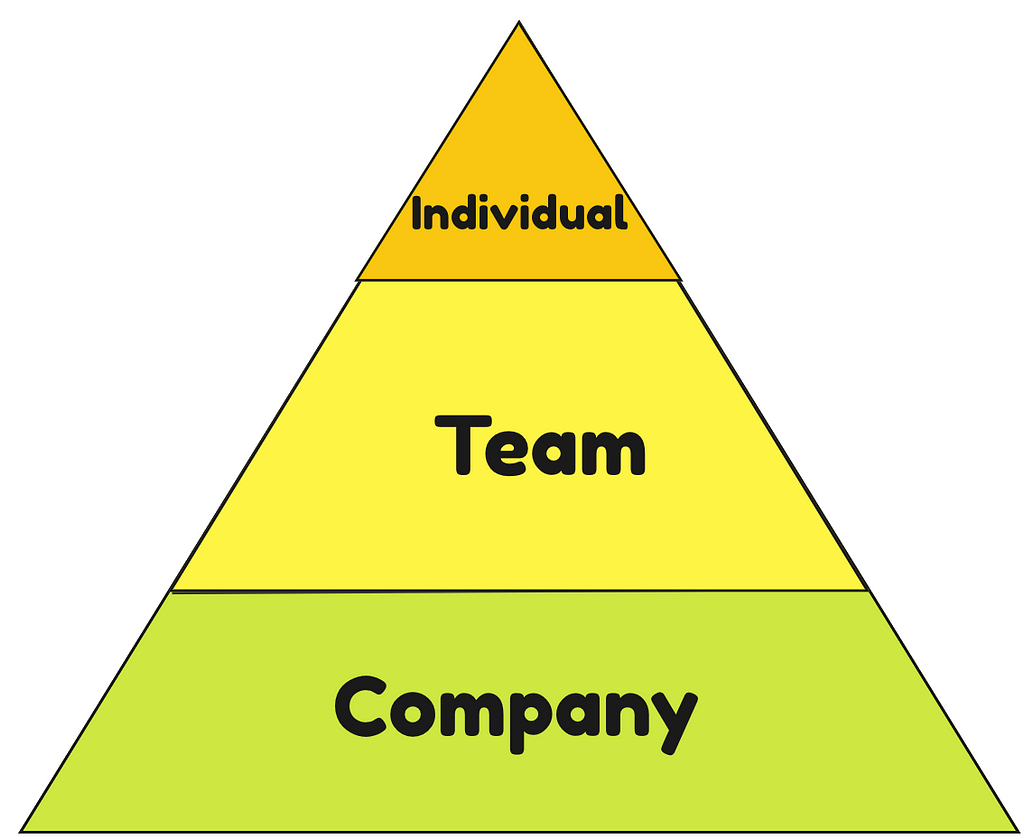Insights from a decade as a Google manager on the key to success and how to be a force multiplier for your team and organization
Over 20 years (nine at Google) of leading software teams, I’ve gained insights into what it takes to be a successful manager. These shared insights and learning, drawn from my personal experiences and coaching numerous managers, apply to most management positions.
To be a successful manager, you should divide your focus into three main areas:

Just a second before we jump into the details of the trinity (and I’ll add examples and break down each piece of the trinity), let me touch on the biggest difference between individual contributors and managers.
Multiplier, Force Multiplier
As a frontline manager responsible for individual contributors, your role shifts from being a contributor (coding, designing, reviewing, supporting, writing PRDs, designing and implementing processes, etc.) to becoming a force multiplier for your team’s collective skills and efforts.
While others on your team focus on delivering artifacts (code, architecture, PRDs, mocks, etc.), your value lies in optimizing the group’s performance and aligning it with company needs. The better you can make the group work — individually, together, and matching with company needs through all the activities mentioned above — the more value you add, this is where it is.

Time and attention invested in individual contributor activities will detract from your ability to mold a high-performing team. While others can do your previous job (analyzing product usage, triaging bugs, coding, designing, etc.), no one can do your current job — connecting the dots between people into a machine contributing to the company’s needs.
If you spend time on hands-on work, avoid being on the critical path of delivering a project because your attention might be needed at the team level, and you’ll risk hurting the team’s ability to deliver.
You might be the best coder or most experienced architect on the team. Still, continuing to play those roles without mentoring team members to fill those spaces eventually means limiting growth opportunities for your reports and limiting your future ability to scale (taking on more projects or more reports).
The Manager Trinity
The trinity is relevant and applicable to other managers in software companies (e.g., PM, UX, PgM).
It took me years to understand and articulate the core tenets of my job as a people manager:
Help individuals be happy and productive so they can form happy and productive teams that deliver value to the company (through software).
This managerial trinity involves a progressive focus, starting with individuals, expanding to teams, and ultimately impacting the company. I’ll delve deeper into each tenet in the subsequent articles while providing a concise overview.
Help individuals be happy and productive:
Hire, fire, mentor, guide, coach, manage performance and help people grow and develop. Genuinely care about the people you work with and take action to help them succeed.
Help teams be happy and productive:
In parallel to molding the individuals on your team, your job is to build, design and shape effective teams that predictably deliver business value.
You want to create a well-oiled machine made of gear wheels. Each team member is a gear wheel, turning to produce something valuable for the company. When the wheels integrate sufficiently, even one working wheel can slowly turn the others, so each wheel’s work is a bit easier, making the whole greater than the sum of its parts.
Deliver value to the company:
This is the final aspect of your role, achieved by aligning the team’s abilities, skills, and aspirations with the company’s business goals. Simply said, it’s a matching challenge. The work assigned to team members should help the company — this is called Impact or Value — and inspire the team members.
They should understand how they help the company achieve its goals and, ideally, see how it helps them achieve their individual goals (based on their skill set and aspirations). I say “ideally,” recognizing that matching everyone’s personal goals with company needs is hard to do consistently but is doable most of the time.
This is where strategic thinking by the manager comes in. Based on the manager’s understanding of the company’s direction and current and future needs, and their team’s abilities and gaps, they will develop a strategic plan. That doesn’t have to be a formal written plan. It can be technical, process, or product strategy. As you gain experience as a manager or in the company, you will start guiding the team in certain directions to better connect the dots between the company and the people you lead.
Managers of product, user experience, and project managers — this is about you too!
While my direct experience was leading engineers and eng managers, the manager trinity holds for other software managers. I’ve worked closely with and mentored managers of product managers (PMs), managers of program/project managers (PgMs), and user experience (UX) managers — the three aspects of their job roles are identical: individuals, teams, and companies. Notably, what sets the best PM/UX/PgM leaders apart is recognizing the value of nurturing their teams and connecting individuals and teams to the company’s objectives. Regrettably, many PM/UX/PgM leaders focus solely on growing individuals on their team, overlooking opportunities to be force multipliers for their company and teams.
Of course, this is not a comprehensive job definition. It’s my view of what’s important and what might be pitfalls.
So remember, if you are a manager, your goal is to help individuals be happy and productive so they can form happy and productive teams that deliver value to the company.
In the following articles, I will detail what each element of the manager trinity means and offer tangible examples. Stay tuned.
Have you ever defined your job as a manager?
The Manager Trinity: The 3 Tenets of Successful Management was originally published in Better Programming on Medium, where people are continuing the conversation by highlighting and responding to this story.